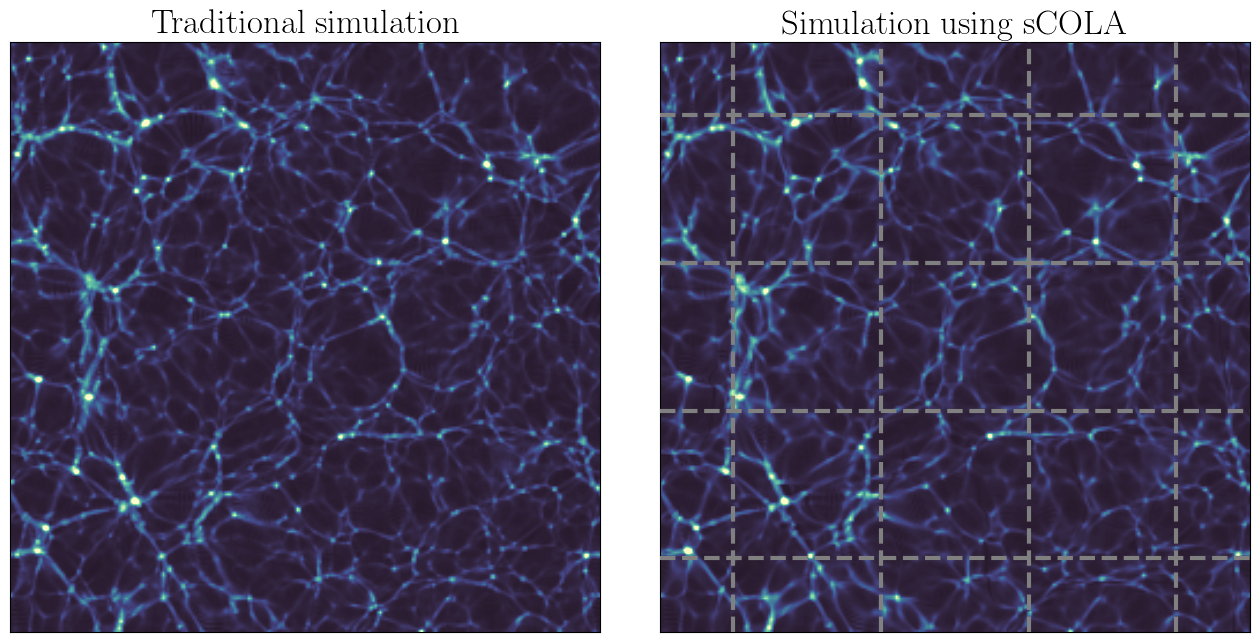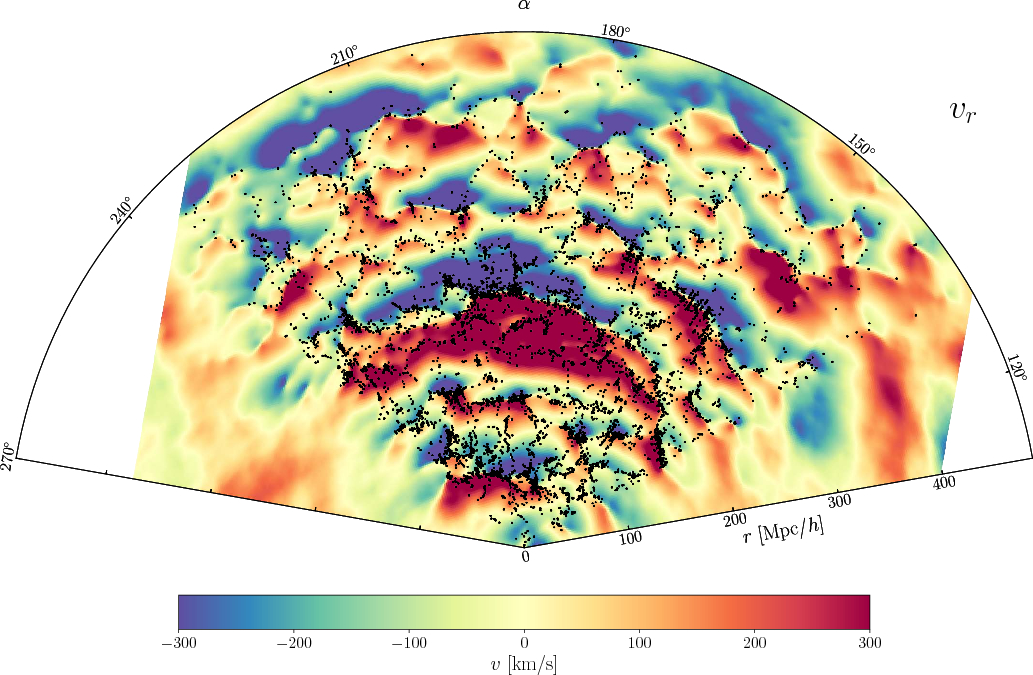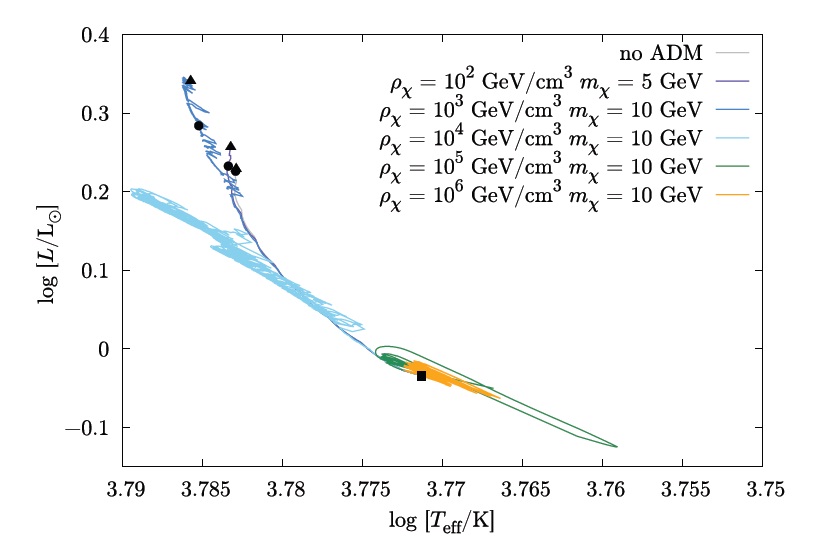Énergie noire et intelligence artificielle
(Conférence à l'Institut d'Astrophysique de Paris le 2 avril 2024)
04-2024
La satellite Euclid et l'analyse de ses données :
énergie noire, information et incertitude
(Conférence au festival d'astronomie de Fleurance le 11 août 2023)
02-2024
The Universe on a mobile phone
(Press coverage of Leclercq et al. 2020)
05-2020 Comparison between a traditional simulation (left panel) and a simulation using our new algorithm (right panel). In our approach, the volume of the simulation is a mosaic made of "tiles" calculated independently and whose edges are represented by dotted lines.
Comparison between a traditional simulation (left panel) and a simulation using our new algorithm (right panel). In our approach, the volume of the simulation is a mosaic made of "tiles" calculated independently and whose edges are represented by dotted lines.
- Blog post (25 May 2020): Simulating the Universe on a mobile phone
- Article in The Conversation France (26 May 2020): "Vers une simulation de l’Univers sur un téléphone portable" (in French)
- Press release from Imperial College London (29 May 2020): "Misfolded proteins and simulating the Universe: News from the College"
Novel maps of matter flows in our cosmic neighbourhood
(Press coverage of Leclercq et al. 2017)
07-2017 Slice through the celestial equator showing the radial component of the velocity field (in kilometers per second). Blue regions are falling towards us and red regions are flying away from us. Galaxies of the Sloan Digital Sky Survey main galaxy sample are overplotted. In the centre of the slice, the infalling dynamics of the Sloan Great Wall, one of the largest structure of the known Universe, can be observed. Figure from Leclercq et al. 2017.
Slice through the celestial equator showing the radial component of the velocity field (in kilometers per second). Blue regions are falling towards us and red regions are flying away from us. Galaxies of the Sloan Digital Sky Survey main galaxy sample are overplotted. In the centre of the slice, the infalling dynamics of the Sloan Great Wall, one of the largest structure of the known Universe, can be observed. Figure from Leclercq et al. 2017.
- Press release from the University of Portsmouth: "Cosmologists produce new maps of dark matter dynamics", covered by phys.org among others.
- More detailed press document: "Novel maps of matter flows in our cosmic neighbourhood" pdf
- Announcement on the website of INSU: "De nouvelles cartes des flots de matière noire dans notre voisinage cosmique" (in French) pdf.
- Interview by Pan European Networks: Science & Technology (Issue 24, September 2017): "A light in the dark" pdf
- Article in Discover magazine (November 2017 issue): "Charting the unseen sky" pdf
- Science highlight from the Institut d'Astrophysique de Paris: "The origin of the large-scale structure of the Universe and dark matter flows in our cosmic neighborhood" (also in French here)
- Article in Science & Vie (Issue 1233, June 2020): "5 télescopes à l'assaut de la toile cosmique: À l'assaut des vides, 100 000 bulles obscures vont être cartographiées" pdf (in French)
- Article in Science & Vie (Issue 1234, July 2020): "La Voie lactée se trouverait au milieu du plus grand vide de l'Univers" (in French)
Stars containing dark matter should look different from other stars
(Press coverage of Iocco et al. 2012)
02-2012 A Hertzsprung-Russell diagram for stars of one solar mass in environments with varying asymmetric dark matter densities. At lower densities (blue and purple lines), the stars are brighter, while at higher densities (green and orange lines), the stars are cooler when compared to stars on the standard path that contain no dark matter. Figure from Iocco et al. 2012.
A Hertzsprung-Russell diagram for stars of one solar mass in environments with varying asymmetric dark matter densities. At lower densities (blue and purple lines), the stars are brighter, while at higher densities (green and orange lines), the stars are cooler when compared to stars on the standard path that contain no dark matter. Figure from Iocco et al. 2012.
- Feature story on phys.org: "Stars containing dark matter should look different from other stars"

